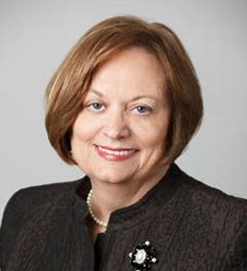
Only a few months ago the court battle over school funding was a central issue of legislative concern and media reports. Now triumphant, school districts are deciding ways to implement the approximately $500 million of new funding that will flow to schools over five years with an additional $90 million yearly to cover inflation.
Both the Kansas State Department of Education and the Kansas National Education Association recently suggested directing a portion of the funding to increase teacher salaries and help mitigate teacher shortages.
In fall of 2018, there were 612 Kansas teaching positions that remained unfilled by a qualified teacher, up 99 vacancies from the previous year.
Conservatives, libertarians and liberals, usually at odds on education issues, appear united in advocating for more resources going into the classroom; thus, improving our schools. This is where the agreement among education interest groups stops, because some groups do not believe across-the-board pay increases can help improve learning conditions.
In today’s world, political arguments, like those surrounding teacher salaries, are often based on selected data, thus opening the door to attacks claiming that any opposing group’s data is fake, misleading or based on alternative facts. Even the veracity of data collected by long-standing, reliable organizations can be questioned.
Despite such contention, information from respected national forums and venerable government agencies can help place Kansas teacher pay issue in context.
A recent National Education Association report found the average 2017-18 starting teacher salary nationally was $38,000, but in Kansas it was $35,000 with the average salary of all Kansas teachers at $49,754.
NEA also found the national average one-year increase in 2017-18 public school teacher pay was 2.9 percent. Kansas teachers received an average increase of 0.67.
Looking at teacher’s pay another way by comparing teacher earnings to those in careers requiring similar education and experience, on-line research found U.S. nurses’ median (a middle point where half of salaries fall above and half below) pay is currently $67, 490 and police officers make about $65,400.
Unlike nurses, teachers teach students, but they also are front-line responders to support students with disabilities, health and welfare concerns. Unlike police officers who may face personal danger daily, teachers are vulnerable to growing safety threats and are charged with helping protect their students against violence.
While no data on Kansas teachers and salary-gap could be located, the U.S. Board of Labor Statistics latest report showed that during the school year, nearly one in five teachers nationally worked a second job earning an average $5,100 to supplement their income. About the same percent hold jobs during the summer.
Some education reform leaders advocate teacher pay raises based on merit alone, but merit pay is granted for an individual teacher’s performance and does not substitute for suitable teacher salaries statewide.
As Kansas recovers from the Great Recession of 2009 and years of Governor Brownback’s tax cut experiment that affected all Kansas teachers and eliminated some teaching positions across the state, pay increases are more than warranted.
Across-the-board increases for all teachers within a district cannot, in themselves, end the teacher shortage, but Kansas teachers deserve the respect that comes with earning an adequate salary. A salary increase can bring teachers the satisfaction of knowing that their work is appreciated and that, in itself, can bring positive changes to Kansas classrooms.
Sharon Hartin Iorio is Professor and Dean Emerita of Wichita State University College of Education.

